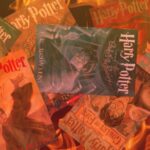Stay home. Stay safe. Do not leave the house unless absolutely necessary.
These are the rules by which we have all been living for months, as dictated by the Coronapocalypse. And for many of us, these rules make sense. The home is the safest place, right? Well, it depends on who you ask. If, for example, you’re speaking to an avid reader of crime, thriller or gothic suspense novels, the answer would most certainly be no.
Within this genre, houses are such a source of terror that they crop up over and over again. Haunted mansions, creepy castles, darkened basements, dusty attics; the dysfunctional rich family and the isolated private estate. We just can’t get enough. But why? What’s the fascination?
Culturally, we are obsessed with property. Even as home ownership declines and most young people find themselves unable to find a foothold on the property ladder, we devour TV shows about renovations, interior design and real estate. We binge on dramas about royal palaces and country estates. They are thrilling to us because they allow us to fantasize about the lives we will never live, but they also force us to make comparisons with the things we do have. They encourage us to want more, to need more, while also posing the million dollar question: what would you do if you lost it all?
This obsession has given rise to a subgenre of domestic suspense novels that has become so popular critic Laura Wilson even coined a term for it. ‘Given the current preoccupation with housing,’ she said in a 2018 article for the Guardian, ‘the property-porn thriller looks set to become a staple of crime fiction.’ In Our House (2018), for example, Louise Candlish paints a clever picture of how far a person might go to protect their assets in a story about a married couple whose lives spiral into a nightmare after one of them sells their family home behind the other’s back. Lisa Jewell shows us the compulsive desirability of property and the nefarious things people are prepared to do in order to get it in The Family Upstairs (2019), and in literary thriller The Snakes (2019), Sadie Jones explores the abusive power of extreme wealth as it plays out through property development, real estate—and truly poisonous parenting.
Fictional houses satisfy our thirst for voyeurism, too. Who doesn’t love to walk down a darkened street at night and peek into brightly lit windows? Who wouldn’t enjoy a revival of eighties nosey-parker show Through the Keyhole? We enjoy nothing more than a glimpse into the lives of others, especially when those lives seem ‘better’ than ours. In the age of Instagram and lifestyle blogs we are more fascinated by privilege than ever, not just because we fetishize it but because we also delight in searching for faults; we need to know that the rich and famous are struggling too—preferably even more so. There is delicious schadenfreude, for example, in seeing the pain and complexity hidden within the impeccable Swedish cabin in Michelle Sack’s You Were Made for This (2018).
Modern gothic tales are moving away from the traditional decay and dilapidation and more towards settings worthy of a spread in Architectural Digest.Perhaps this is why modern gothic tales are moving away from the traditional decay and dilapidation and more towards settings worthy of a spread in Architectural Digest. The house in JP Delaney’s The Girl Before, One Folgate Street (2016), is so beautiful, so extraordinary, that it becomes the star character. Ruth Ware does something similar with The Turn of the Key (2019), a contemporary retelling of the Henry James classic The Turn of the Screw (1898). Both these books make shrewd use of tech to give their houses minds of their own: talking appliances, surveillance cameras, invisible microphones, voice-controlled automation and malfunctioning smart systems all contribute to a growing sense of imprisonment and loss of control —themes that resonate more deeply today than ever before.
Advancing technology has left many of us feeling exposed; the internet is everywhere, it controls everything, we can no longer function without it. There are plenty of advantages, of course, but the expansion of our online lives has led to a tornado of anxiety, narcissism and hypervisibility from which there is no shelter. The house is no longer an escape from the outside world; our children carry the playground with them in their pockets, the workplace burns in our hands at night. Because we cannot unplug, we never get a break and our mental health is paying the price.
In fact, it could be said that the internet has replaced the physical home as the place in which we live. When I was thirteen, my bedroom walls were plastered with photographs, magazine clippings, movie stubs and posters. Today, my social media profiles look very similar. In the same way that I once used my real-life space to construct and display my identity, I now use a virtual one. Websites, blogs and other social platforms serve the same purpose, but the walls of these digital rooms are amorphous and leave us open to attack from hackers, scammers, trolls—and, as Jia Tolentino puts it, “incessant forced connection” (Trick Mirror, 2019). Indeed, she describes the internet of today as a “feverish, electric, unliveable hell.”
As the world changes, so do our fears. Life is moving so fast that we no longer know what we’re up against. The concept of ‘truth’ is muddy. Threats that once seemed vague are now all too real. Take climate change, for example. Only last year, thousands of Australians lost their homes as bushfires reduced whole communities to ash. Houses in Ireland and the UK sustained unprecedented levels of flood damage, and a village on the north coast of Wales is now set to be the first to be decommissioned as a direct result of rising sea levels.
Our homes are not just under attack from the outside, either. COVID-19 has brought about widespread loss of income and economic insecurity. Lockdown restrictions are increasing the risk of domestic violence. And as the death toll rises, many children will be left alone and vulnerable. We are battling forces way beyond our control.
All this considered, it’s not hard to understand why today’s writers and readers are increasingly drawn to domestic-centred stories. We use storytelling to understand ourselves and the world around us, and what better place to start than within our own four walls? But, now that so many of us have spent so much time staying at home, aren’t we sick to the back teeth of the idea? Apparently not. Now more than ever, chilling stories about isolation in remote locations are flying off the shelves. Quarantined readers are devouring new releases such as Lucy Foley’s The Guest List (2020) and Mary Kubica’s The Other Mrs (2020). Topping the ‘most anticipated’ lists are Catherine House by Elisabeth Thomas (2020) and Mexican Gothic by Silvia Moreno-Garcia (2020). Personally, I’m craving Stephen King’s The Shining (1977).
I don’t know, maybe we’re all looking for stories of survival, of protagonists who make it out against all odds. Maybe we need escapism with an edge; entertainment that takes us away from reality, but which doesn’t deny us our feelings of panic and dread. Or maybe we just enjoy a good thrill. Who knows? Whatever the reason, the #bookstagram verdict is in: houses are hot, and the scarier the better. Clearly, we don’t understand ourselves just yet.
***


















